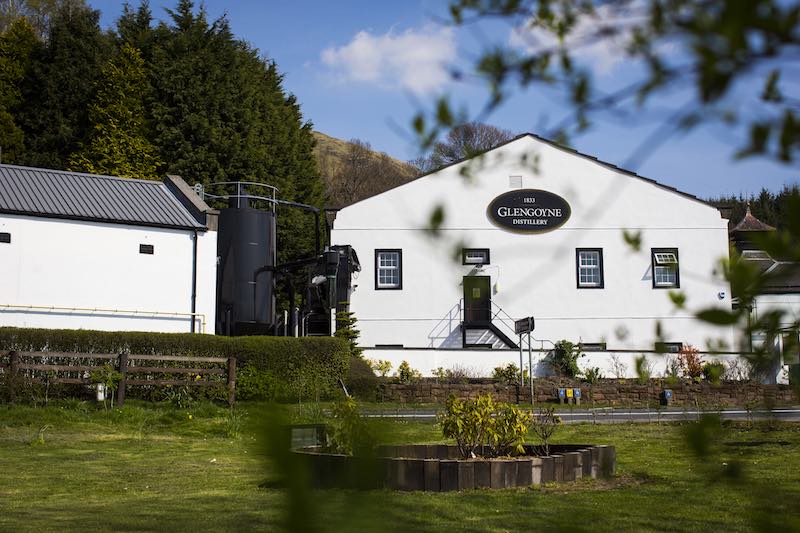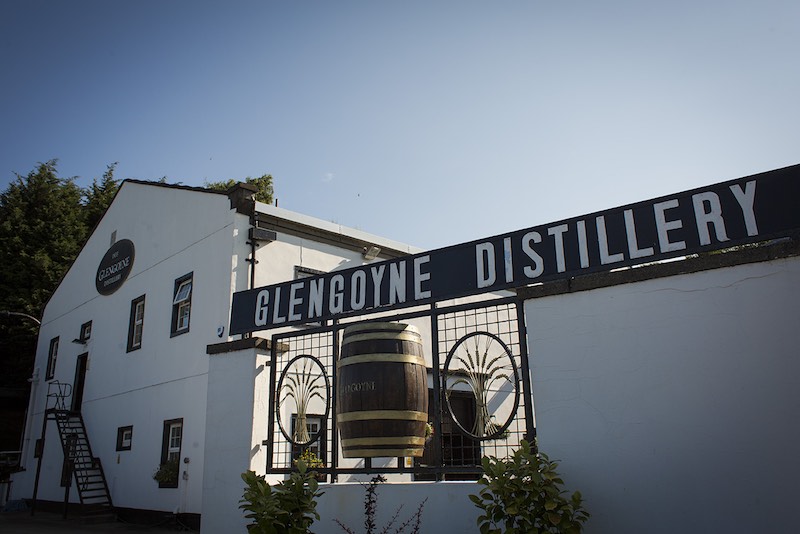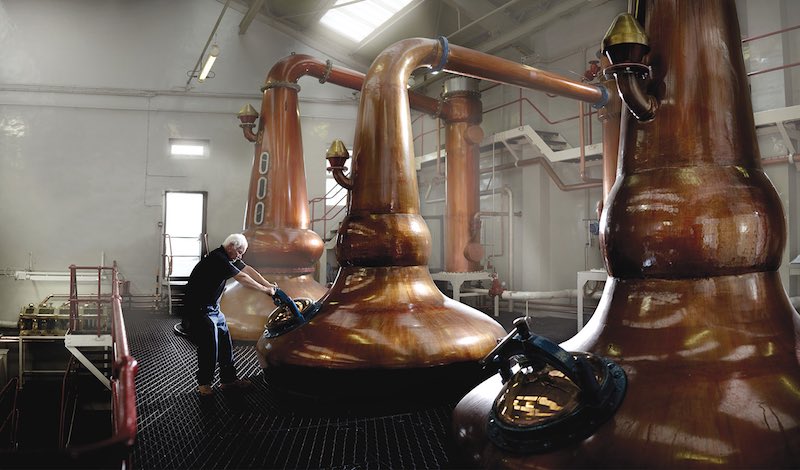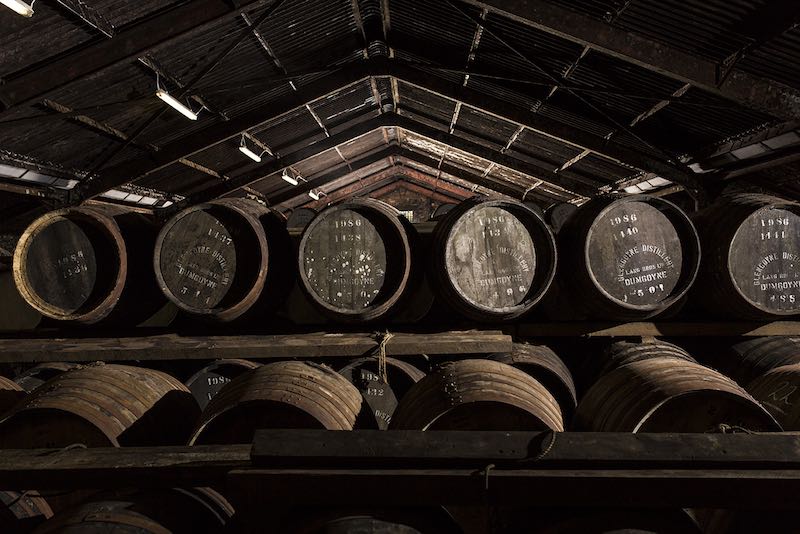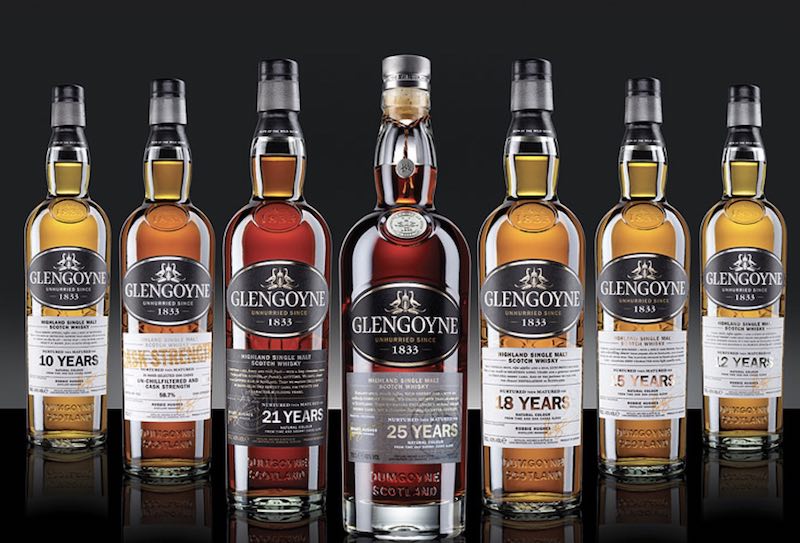The Glengoyne Way – No One Takes More Time & Care
Glengoyne Distillery nestled deep within the beautiful landscape of Dumgoyne, north of Glasgow, Scotland. Within the surroundings of the distillery, a hidden waterfall waits to surprise first-time visitors. The miniature glen that Glengoyne sits is an amazing sight to behold. There is no wonder that visitors often named Glengoyne Distillery as the most beautiful distillery in Scotland.
History of Glengoyne
George Connell was the founder of Glengoyne distillery. History has it that Connell began distilling at Burnfoot Farm – the current Glengoyne distillery – in 1820. Safe within the miniature glen that hid the farm from the Exciseman, Connell escaped the notice of the law. Connell was not the first man to distil at the farm illegally as he learnt the trade from his grandfather.
In 1823, the law changed with the introduction of the Excise Act. Many underground distilleries took the license to operate, but Connell did not. In 1833, he finally decided to work with the law and obtained his license. He named the distillery Glenguin of Burnfoot. Connell took a 99-year lease on the land where Glenguin sat in 1836. It gave him the right to use the water of the property at any future time. Critically, Connell also made the decision not to use peat in his distillation process. His decision to deny peat in his whisky behold his legacy until today.
The Distillery Changed Hands
The distillery changed hands in 1876 to the Lang Brothers in Glasgow. History has it that the Lang brothers wanted to change the distillery name to Glengoyne, but a clerk made a mistake, and the distillery became Glen Guin. The name Glengoyne did not take effect until 1907. Did you know what Glengoyne means? It comes from Glenguin, which means Glen of the Wild Geese.
The Lang brothers took ownership of Glengoyne until 1965 before selling it to the Robertson & Baxter Group. The R&B Group eventually becomes Edrington Group. Under Edrington, the distillery underwent a rebuilding project between 1966 and 1967. They added one more still to the distillery, expanding it from two to three stills.
In 1984, Glengoyne became suppliers of whiskies to the then Queen Mother, Her Majesty Queen Elizabeth’s household. The Royal Warrant can still be seen on all the Glengoyne products today.
The Beginning of the Modern Era
Ian Macleod Distillers Ltd acquired Glengoyne Distillery in April 2003. The taking over included both the “Glengoyne Single Malts” and “Langs Blended Whisky” brands. Under the family-run company, Glengoyne expanded rapidly regarding output capacity and sales. Ian Macleod keeps to the traditional way of making whisky at Glengoyne, and instead, increase the equipment onsite to increase output. Today, Glengoyne has eight working warehouses with a total capacity of nearly two million litres.
Before we move on from the history of Glengoyne, it is worthy to mention that Glengoyne distilled whisky in the Highlands and matures its whisky in the Lowland. What? Yes, it is true because the distillery sits upon the Highland Line, which divides the Highland from the Lowlands. Glengoyne, however, is still regarded as a Highland Whisky.
The Glengoyne Way
We spoke of the Glengoyne way of making whisky, but we have yet to tell you what it is. The Glengoyne way is six guiding principles that keep the distillery true to their past and the original decision that George Connell made in 1833. The distillery team believes that to change one element would alter the bold and complex flavours of Glengoyne.
Principle #1 – Unpeated
Glengoyne’s whisky is always unpeated. In 1833, the decision was one that was out of necessity. There was no peat in Dumgoyne. Unpeated whisky defines what Glengoyne stands for today – it produces only the most exceptional sherried whisky. The distillery uses Golden Promise barley, similar to The Macallan in Speyside. Perhaps that is why Glengoyne tasted somewhat like The Macallan. Is that the barley making its stake in the whisky?
Principle #2 – Patience
Glengoyne runs the slowest stills in Scotland. The distillate interacts immensely with their copper stills to eliminate the undesired chemical compounds. The result is a smooth, hugely complex spirit that the distillery is known for.
Principle #3 – Sherry Oak Casks
Before the 1870s, Glengoyne did not use sherry oak casks for maturation. However, the boom in sherry in London during the 1870s yields high-quality sherry casks and Glengoyne took the economical route by utilising the sherry casks for maturation. The result was stunning; taking Glengoyne whiskies to new heights and new depths. In today’s market, sherry is not so readily available, and Glengoyne needs to make a decision. They did by sticking to their principle. They use only the best sherry casks and control the process from oak forest all the way to the distillery.
Principle #4 – Maturation
The warehouses at Glengoyne are traditional. Made of stone walls and earthen floor, each warehouse protects the maturing casks from extreme temperature changes. The casks are not stacked close together either. By giving them the space needed for maturation, the distillery creates the consistent evaporation rate that they want in each of their casks.
Principle #5 – Natural Colour
By taking control of the sherry casks they procured, the distillery ensures that the colour of each whisky is natural and without added colour. The clear spirit from the distillery takes on the colour of the cask that they matured in, before getting bottled and released to the market.
Principle #6 – Tradition
It is hard to keep to tradition, but Glengoyne does it, every single day. From 1833 when Connell took the license to operate the distillery legally, the intricate steps he chose to make the whisky are still in use today.
The Glengoyne Whisky
The range of whisky from Glengoyne Distillery is impressive. Starting at ten years old, the core range moves up to 25 years old and a NAS cask strength edition. In between, we have the 12, 15, 18, and 21 years old. The distillery is moving away from the ten years old in recent years and in the future, the 12 years old will be the entry point of the core range.
Besides the core range, there are also rarer whiskies to be found. The Glengoyne 30 years old and 35 years old are expressions to behold. The 30 years old boasts of intense sherry notes with cinnamon, cloves and tangy marmalade. The 35 years old (distilled in the 1970s) boasts of tropical fruits, liquorice and a dark chocolate finish. It also comes in an artistically-designed decanter. Only 500 bottles are available worldwide.
What to Expect Next
Ian Macleod plans to focus on Asia for the Glengoyne brand shortly, so we can look forward to tasting events and food pairing sessions. While the organising committee is getting the logistics sorted out, let us wait patiently for the news. We will inform our readers when the events are ready!
Like what you have just read?

